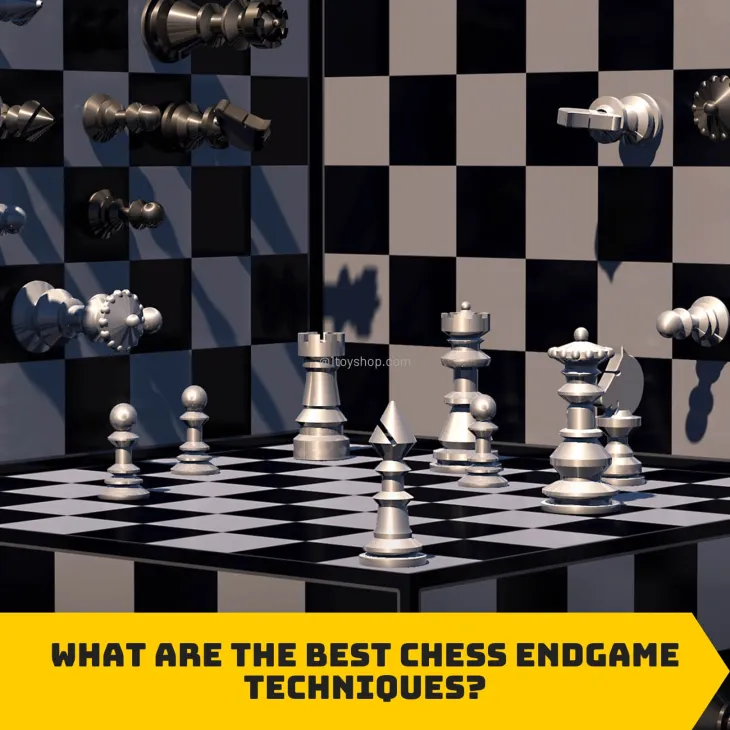What Are The Best Chess Endgame Techniques?
On
20/09/2024Reading time:
8 min
Summary:
By mastering pawn promotion, king and pawn endgames, king and rook endgames, king and knight endgames, and king and bishop endgames, players can improve their chances of success and achieve a higher level of play.

To Get More Wonderful Toys And Take Discount Today. Click On The Image.
Chess, a strategic board game that has captivated minds for centuries, often culminates in the endgame, a phase where the number of pieces on the board is significantly reduced. This crucial stage requires a deep understanding of various techniques to achieve a successful outcome.
One of the most fundamental endgame techniques is pawn promotion. When a pawn reaches the opposite side of the board, it can be promoted to any piece other than a king. This strategic maneuver can be used to create a material advantage or to force a checkmate. For instance, promoting a pawn to a queen can provide a powerful attacking force, while promoting it to a knight or bishop can offer greater mobility.
Another essential endgame technique is king and pawn endgame. This type of endgame often involves a king and one or more pawns against an opposing king. The goal is to safely navigate the pawns to the opposite side of the board and promote them to queens. This can be a challenging task, as the defending king may attempt to block the pawns' progress or to create a stalemate.
When dealing with multiple pawns, understanding the concept of passed pawns is crucial. A passed pawn is a pawn that has no opposing pawns in front of it on the same file. Passed pawns can be very powerful, as they can be pushed forward without the threat of capture. However, they also require careful handling to avoid being trapped by the opposing king.
In addition to pawn-related techniques, king and rook endgames are also a common occurrence. These endgames often involve a king and rook against an opposing king. The goal is to create a mating threat or to force the opposing king into a corner. The key to success in these endgames lies in understanding the principles of rook control and king coordination.
For players who enjoy tactical challenges, king and knight endgames can be particularly intriguing. These endgames often require creative thinking and precise maneuvers to achieve a checkmate. The knight's ability to jump over pieces can be used to create forks and threats, while the king's mobility can be used to support the knight's attacks.
Finally, king and bishop endgames can be quite complex, as the bishop's diagonal movement can make it difficult to control the board. However, with careful planning and execution, it is possible to achieve a successful outcome. Understanding the principles of bishop pair and bishop control is essential in these endgames.
In conclusion, the endgame is a critical phase of chess that requires a deep understanding of various techniques.
Source: Team 1ToyShop (1.T.S) compiled, analyzed and wrote. Pls dont reup without source. Many thanks.

Chess Toys For Kindergarteners: Introducing Strategic Thinking And Social Skills
Author name
16.05.2024
Has your little one ever shown a spark of interest when you're pondering over the chessboard? Believe it or not, the ancient game of chess isn't just for adults and older kids. In fact, with the right approach, kindergarteners can get in on the fun too!

Chess Toys For Middle Schoolers: Developing Advanced Problem-Solving And Critical Thinking Skills
Author name
16.05.2024
Ever wondered what secret potion helps transform your average middle schooler into a problem-solving ninja? Spoiler alert: it's not radioactive spiders or a diet of pure algebra—it's chess toys! Yes, the ancient game of kings, knights, and rooks isn't just about sporting intense stares across the board.

Chess Toys For Preschoolers: Stimulating Logic, Reasoning, And Imagination
Author name
16.05.2024
The preschool years are a period of remarkable growth and development, as young minds eagerly explore the world around them. During this time, preschoolers begin to grasp fundamental concepts like numbers, letters, and colors.
